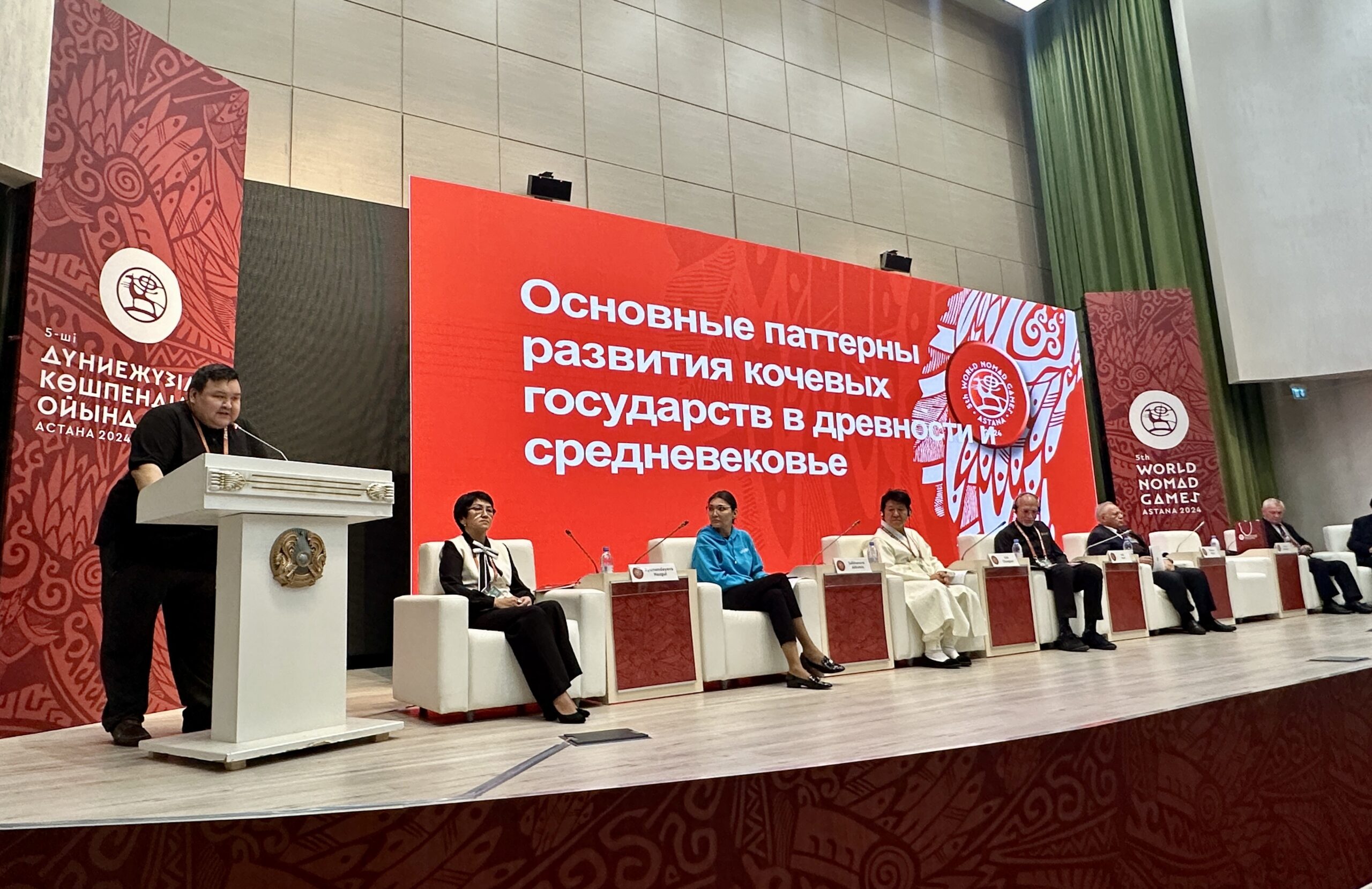ASTANA – The international scientific and practical conference, titled Nomads: History, Knowledge, Lessons, kicked off in Astana on Sept. 9, as part of the scientific program for the fifth World Nomad Games.

Scholar Zhaksylyk Sabitov (L) presenting on the main patterns of nomadic states development. Photo credit: Aibarshyn Akhmetkali/The Astana Times
The first day of the three-day conference seeks to explore nomadic history and culture. The second day will focus on sports science, while the third day will discuss the nutrition of nomadic communities in Central Asia.
Kazakh Minister of Science and Higher Education Sayasat Nurbek attended the conference, highlighting the importance of the platform in fostering the exchange of new ideas and perspectives on nomadic civilization, a field which has long been overlooked.
“Now a great scientific breakthrough is taking place in world history about nomads. The culture and history of nomads have not yet been fully explored. A new approach is being formed by European and American historians. We are in front of huge new discoveries and new news,” said Nurbek.
Scholars such as Frederick Starr, Peter Frankopan, and Alexander Morrison, are introducing fresh perspectives on the study of nomadic societies, challenging traditional approaches. As more international libraries and archives begin to grant access to Kazakh historians, there is the potential to uncover previously unknown information.
During Kazakh President Kassym-Jomart Tokayev’s visit to the Vatican in January this year, Kazakh scientists secured access to archived materials from the Vatican Library.
“The archives of the Vatican were inaccessible for many years. But now Biblioteca Apostolica Vaticana and other museums and archives are open to us. We have organized special funding, and by the end of this year, several prominent scholars, historians and experts will travel there to conduct research in those libraries,” said Nurbek.
“Back in the days, in the 10th to 12th centuries, large missionary groups from the Vatican, including ambassadors led by Carpini, journeyed to the Altyn Horde and Mongolian leaders. During their one and two year travels, they memorized everything and meticulously documented their observations upon their return. We have never had access to those materials. We have high hopes for the potential insights they might provide,” he added.
The conference continued with a report from Zhaksylyk Sabitov, candidate of political sciences and head of the Scientific Institute for the Study of Jochi Ulus, who addressed common misconceptions about nomadic state development.
“It is important to note that the concepts we initially studied were largely Western-centric, portraying a worldview in which some states were considered advanced while others were labeled as backward. Within this framework, nomadic societies were often seen as a dead-end branch of human evolution and consequently regarded as second-rate in comparison,” he said.
Those concepts were disconnected from historical realities and lacked a foundation in primary sources. Instead, they relied heavily on mythologized ideas of so-called “armchair historians” who had never truly studied nomadic societies firsthand, according to Sabitov.
“The study was based on chiefdom. The concept of chiefdom suggests that because there is a chief, it does not qualify as a state,” he said.
However, as Sabitov points out, there is substantial evidence of a strong army, which challenges this notion. In fact, when compared to how Chinese scholars studied the Gun chiefdoms, these societies were often considered empires rather than simple chiefdoms.


